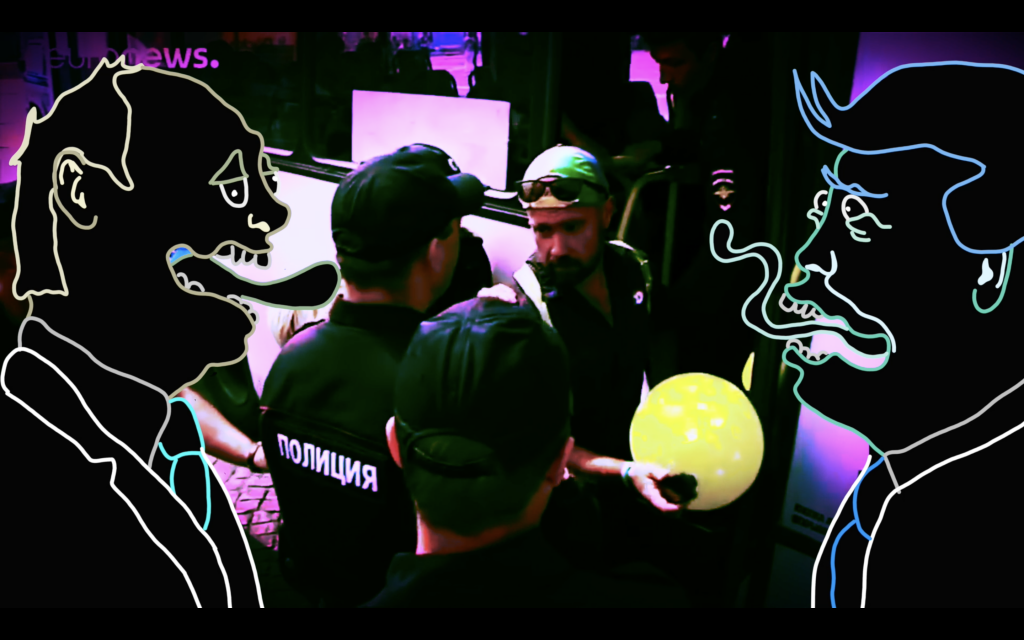
The image I chose to hijack is the mural of Trump and Putin kissing, installed in Lithuania by artist Mindaugas Bonanu in 2016. It is intended to be a commentary on the two leaders egos and their willingness to work with one another yet it has become controversial recently, with many claiming it to be homophobic.
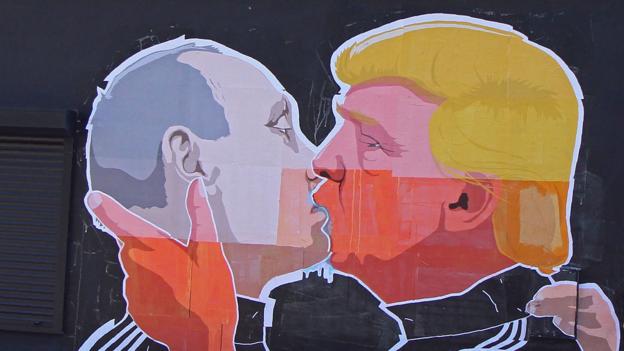
This is not the first time a romance between Putin and Trump has been used for comedic purposes and is incredibly present in American media. Saturday Night Live, for example, has insinuated an affair between the two in many of their sketches. While the intent of this is to emasculate Trump and show how much he is under Putin’s thumb, by communicating it through queer coded images, queerness itself becomes mocked by liberal media that claims to support LGBTQIA+ communities. In hijacking this image, I wanted the cruelness of these figures to come to the forefront and the ridiculousness of the Trump and Putin administration to be visually present without needing the crutch of an easy laugh that comes from two men kissing.
The tools I used for this project were Krita, an open-source graphics editor, and iMovie. Through Krita, I was able to experiment with editing the original image and completely recreate it through digital painting. With the ability to do both, I was able to find a middle ground with what kind of image I wanted to create while still making it clearly a hijack of the original image.

What made the original mural so successful is because of the comedic history of two men kissing. Because of heteronormative society, it instantly is separate from the “norm” and can, therefore, cause a reaction from its audience. To hijack it yet still make it resonate with its audience, I had to find a way to keep my image comedic yet take the queerness out of it. In my first attempt, I was unsuccessful. I was so rooted in wanting to call out what I found oppressive about the image that I might as well have written an article about it. It was not useful art. Those who would see the message would either already know it or would be unwilling to listen to it and, on this campus, I would be preaching to the choir. I wanted to create an image that drew its audience in with the promise of being comedic while the hatred Putin and Trump have and uphold against the queer community is obvious.
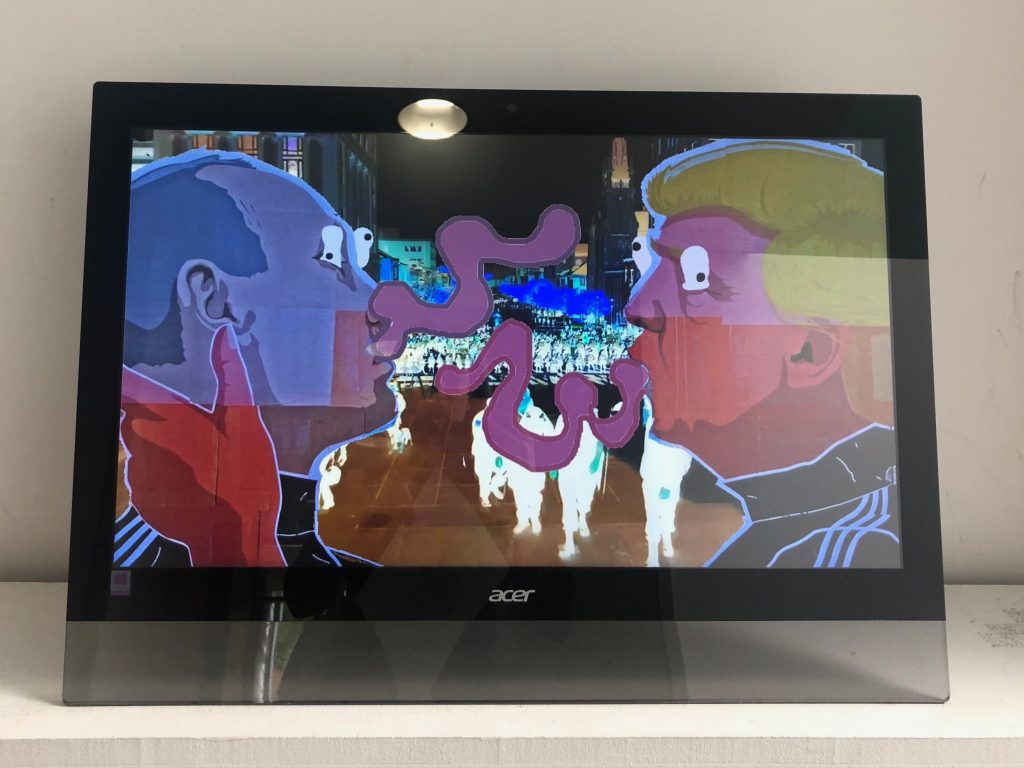
My final installation was an altered video of protests, rallies, and political figures from both Russia and the United States with the changing figures of Trump and Putin sitting on top of it. Like my first attempt at hijacking the image, I separated Trump and Putin’s lips so a kiss would no longer be present in the image. Through editing the original image, I simply altered their eyes and gave them enormous tongues (which some of my friends have mentioned looked phallic. This was unintentional.) This gained an immediate response when I presented it to the class. Before the video was even played, I had gotten a laugh. Throughout the video, Trump and Putin revert to monstrous versions of themselves which I drew on Krita and then inverted the colors of on iMovie.
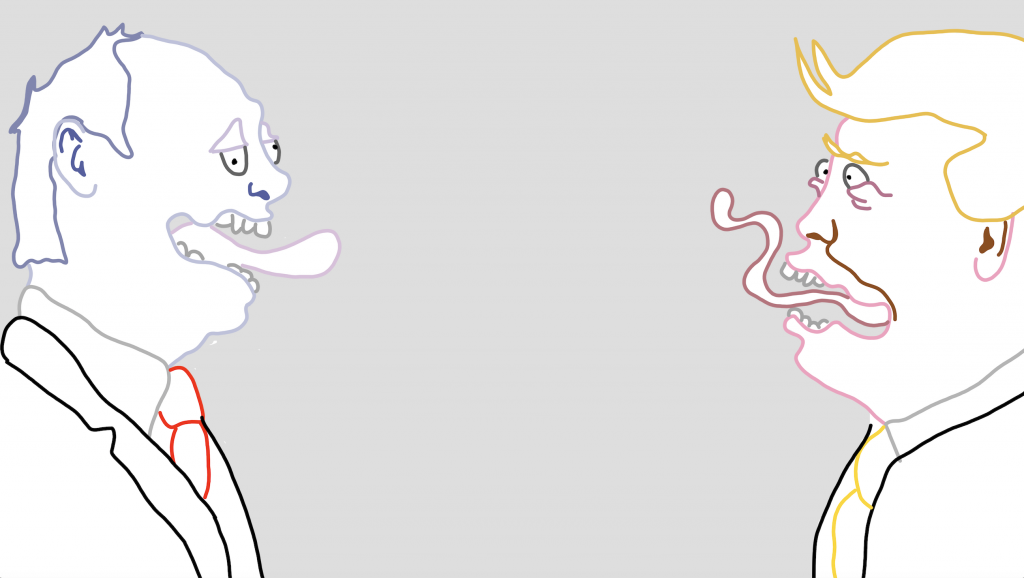
With my use of video, I was able to mock the voices of those whose political views and blatant homophobia by changing their speed and pitch. The voices of reporters or victims, however, were only amplified. The installation plays on a loop in Heimbold. The process of installing was straightforward with the help of Angela and the only roadblock I faced with my hijack being in a public space was having to reduce the volume in the video.
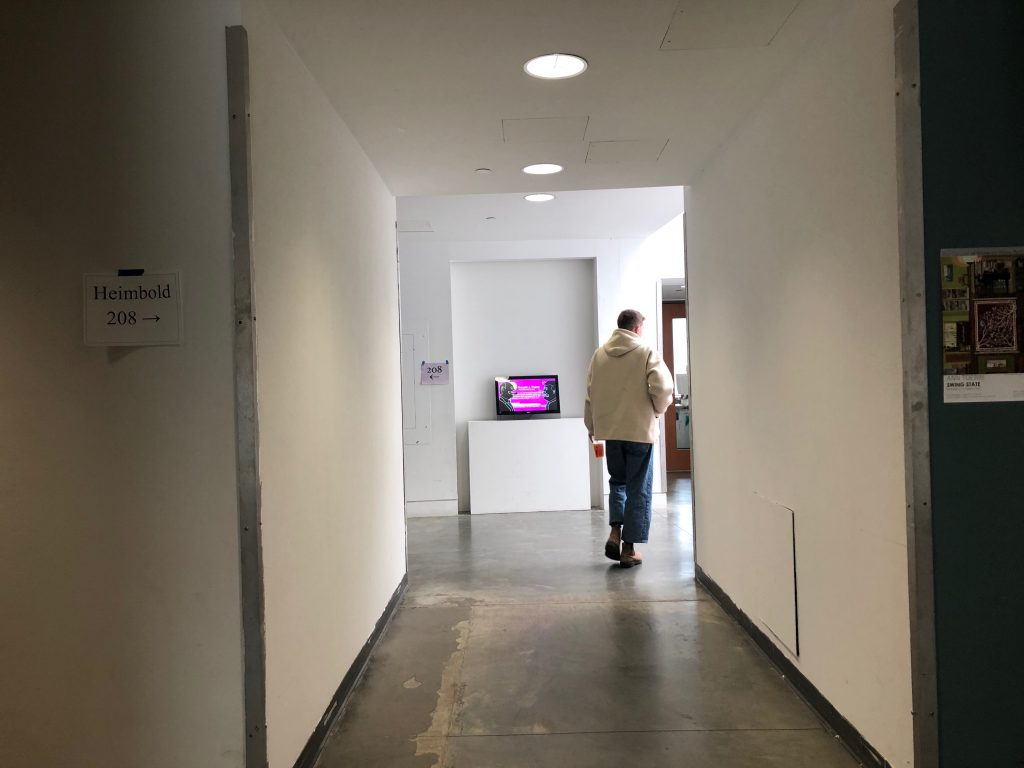
As touched on before, the hardest part of this assignment was experimenting with the serious reality of these men and genuine comedy that wouldn’t harm the groups that were already being targeted by them. The more reactions I got from my peers, both in class and out of, the clearer understanding I got of what would be successful in my image. Once I had an understanding of what I wanted my image to look like, it was easy to use free programs to achieve it. Since the warping of the videos was so extreme, I didn’t have to use any detailed editing and instead could just see how far I could get from the original with the image still being legible.
